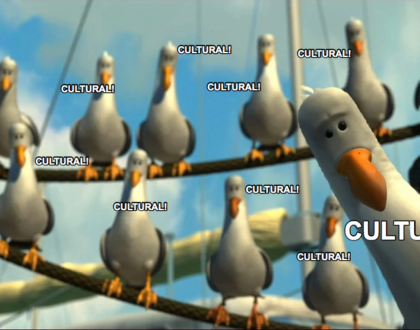Approach to Doctrinal Triage – Part 1

by Bubba
Overview
Bubba tends to be of an extremely analytical and logical nature; as such, he is drawn to systems, frameworks, and workflows in understanding and visualizing concepts. While most everyone appreciates a diagram or picture to help them understand a concept, there aren’t as many (though you are likely one if you are reading this) who are truly attracted to a systematic approach of frameworks and workflows. A long way of saying that this might not be for you, but I find it helps me towards greater clarity in analysis and understanding.
First, we will acquire a framework for understanding doctrine. Back in 2003 (or was 2004?), Randy Tomassi was teaching a Sunday School class at Christ the King church in Batavia, and introduced me to a three tiered classification of Doctrine, which I immediately fell in love with. Recently, my good friend Nathan Chapman (worship leader at The Exodus Church in Belmont) pointed me towards Al Mohlers article “A Call for Theological Triage and Christian Maturity” and asked me what I thought of it. In short, I love it and agree wholeheartedly. The longer version is that there is so much more.
Mind spinning over the past couple of days, I have struggled to get my thoughts on the matter in some semblance of order and cohesiveness that can be clearly articulated to others. There are so many nuances and opportunities to misspeak or be misunderstood that one friend even suggested that perhaps it isn’t worth pursuing. However, for my own peace of mind I need to articulate this, and I pray that it will be useful to others as well.
What Are We Talking About?
At this point, we are talking about Christian Doctrines, Theological Concepts, Principles or Positions. Let us be very technical in understanding what we are dealing with, and clearly point out that we are not, in fact, talking about individuals at this point. We will draw a very clear and distinct line between the Doctrine and an individual who might profess to believe or disbelieve the Doctrine. There are those who will quickly want to assume that if we say Doctrine X is Heresy, we imply that if they profess to believe Doctrine X we are saying that they are Heretics. This is a common paradigm, and it isn’t untoward to default toward assuming this implication. We will clarify, to be utterly sure, that this implication is not our intention.
How can this be so? How might we despise a given doctrine as heresy or false teaching while at the same time loving the one who professes it, to the degree of loving the false teacher? As R.C. Sproul states his book Willing to Believe:
Every Christian has errors of some sort in his thinking. Our theological views are fallible. Any distortion in our thought, any deviation from pure, biblical categories may be loosely deemed “un-Christian” or “anti-Christian.” The fact that our thought contains un-Christian elements does not demand the inference that we are therefore not Christians at all. ………. They are Christians by what we call a felicitous inconsistency.
or, as my good friend Nathanael Szobody stated in an email to me:
So when we come across doctrines that lead to a heretical conclusion, we might also rejoice that those who hold to these doctrines do not come to those same gospel-denying conclusions. Because they respect scripture and believe in Salvation by faith alone they also have the gospel–even while holding a doctrine that contradicts it. In other words their theology contains what we refer to as a “felicitous inconsistency”. Felicitous because they do not, in fact, deny the truth of grace and faith. Inconsistent because their doctrines would deny the gospel if brought to the logical conclusion.
I would confess to felicitous inconsistencies myself, things that I thought I fully understood and appreciate, which over time proved to be wrong, did that mean I was not a disciple of Christ? I submit that means I was less mature or educated in spiritual matters than I thought I was, an imperfect, fallible Christian. My doctrine was wrong, I daresay heretical, but it was not a heresy that couldn’t be treated with a good dose of instruction and perhaps some admonishment in places.
Again, we are herein referring to the technical doctrines themselves, and are not yet dealing with the doctrines in context of specific individuals.
Why Are We Talking About This?
Wikipedia provides a list of Self-Identified Christian Denominations that is both detailed and long. Many will look at this list and see immediate discrepancies, denominations that confess such utterly different doctrines that while they string the same vowels and consonants together to produce the word Christian I can (to borrow from the Princes Bride) look at them perplexed and state, “I don’t think that word means what you think it means.”
This practice of self-identifying effectively robs any word of an ability to effectively communicate a definition, there must be a final authority on the definition of the word in order for the word carry meaning. Otherwise, the word gets redefined to allow anyone who professes anything to lay claim to the word. This results in some weirdness. For example, suppose I meet someone of clear Asian descent and as we greet each other this individual says to me, “Hello! I am a United States Citizen!”
Being an American is important to me, as I am one, and I respond, “Excellent. What is it that makes you a United States Citizen?”
To which this individual responds “I speak, read, and write United States English, I love to eat Hamburgers, and I wear Blue Jeans! This is what it means to be a United States Citizen, and I am a United States Citizen!” This individual goes on to articulate that they have the same rights as any other self-professing American (freedom of speech, right to bear arms, participate in elections, etc.). All based on the definition proposed, as opposed to a legal, authoritative definition of what it is to be an American.
The educated amongst us will giggle and think, that’s just silly. However, this silliness is precisely what has happened with the term Christian. Those who are not professing Christians simply do not have a dog in this hunt and they don’t care one way or the other – to them, it is all silliness. For those who do have a dog in the hunt, it is of increasing importance because we are all declaring something about being a Christian and we are effectively contradicting each other. Not frivolous contradictions that are of no real consequence, but significant and consequential differences that result in people approaching me with statements like “You, Pat Robertson, and all the other Christians really are crazy”.
Whoa! How in the world do Pat Robinson and Bubba get classified as anything remotely resembling the same spiritual beliefs and convictions? Well, we both profess to be Christians! For those who are ignorant of the differences or just don’t care about the differences, that is enough of an association to condemn me for the asinine things he says.
First, I want to ensure that I have an ability to well define my own doctrinal statements and priorities so that I can communicate them. Second, I desire the ability to communicate them in such a way as to differentiate what defines me (and why) as a Christian from other contradictory, self-identifying definitions. Ultimately, I have some very strong convictions and beliefs about some serious eternal punishment and reward, these beliefs subsequently convict me that it is vital to get and teach doctrine correctly, and that there is a priority to said doctrines.
The Framework
Mohler, in his paper, refers to first, second, and third levels or orders of doctrine, wherein the first are the most fundamental and important, while the third is ranked the lowest. Randy taught this as Class A, B, & C and perhaps because I first heard it thus, I prefer to use the Class system (where A is First and C is Third) as opposed to the levels or orders.
Class A
Doctrines that are essential to the Christian faith, these doctrines can be described as fundamental, crucial, the essences of Christianity. Denial of these doctrines is un-Christian, teaching that subverts these doctrines is false teaching, doctrines that counter these doctrines would be heresy. It is noteworthy that this is also the only class of doctrines where we have sub-categories. That is, we break this down into Orthodox (Established) Doctrines and Heretical (characterized by departure from accepted beliefs or standards) Doctrines. By definition, according to this framework, we are saying that if the Doctrine is Orthodox Class A, it is Christian; if the Doctrine is Heretical Class A, it is non-Christian. Christians can not be in disagreement over these doctrines.
In the above example, Definition A states that in order to be a Christian one must believe Doctrines C & B, while Definition B states that a Christian must believe Doctrines A & B. Though both definitions agree on Doctrine B, each definition excludes the other based on Doctrines C and A. Thus, both claim to be valid definitions of core Christian doctrine, yet they do not, by definition, agree on what it means to be a Christian.
Class B
Doctrines that are considered significant to properly defining Christian life and worship yet not considered essential; that two professing Christians may have significant differences over without utterly breaking fellowship. These tend to be denominational level differences, over things like Church Governance, Number and Methods of Observing Sacraments, acceptable methods of worship, etc. These are the types of doctrines that significant differences can be had, and still not consider any of the conflicting approaches to the doctrine to be un-Christian or heretical. Mohler discusses these doctrines as the type that can complicate close community and worship amongst believers, and points out that these class of doctrines tend to be the ones that get the most attention and ultimately cause the most dissention. Christians can be in disagreement over these doctrines, yet still accept each other with compromise.
In the example above, we can see that Doctrine D fully resides in a Class A category, Doctrine E fully resides within a Class B Category, and Doctrine F bridges between Class A and Class B. Our rule (which we will talk more about in the Situational Awareness section below) is that each doctrine is classified according to the highest doctrinal category it touches upon, thus we will classify Doctrine F as an A rather than a B.
Class C
Doctrines that we can have wide and varied differences of opinion on, but maintain close community and worship. These doctrines tend to find, even with the same local church, a wide degree of positional coverage, perhaps even four or five conflicting positions. This is typical of doctrines that have to do with prophecy wherein Scripture provides some picture and understanding of future events, yet (as is the nature of said prophecy) does not articulate a precision that is grasped for by those attempting to define a doctrinal statement around it. Christians can be in disagreement over these doctrines and continue to accept one another without compromise.
To follow the set pattern, in our example above would classify:
- Class C
- Doctrine J
- Class B
- Doctrine K
- Doctrine H
- Class A
- Doctrine L
- Doctrine G
Situational Awareness
To leverage the Emergency Room example, we can say with great confidence that the vast majority of cases involving a bee sting are not Class A issues. A gunshot wound to the chest, loss of limb, or other case will tend to take priority, and we simply wouldn’t statically categorize bee sting in such a classification. However, we are cognizant of the fact that some portion of the population has an extreme, life threatening reaction to a bee sting; and a bee sting case that involves one of these individuals would catapult the issue from “mom will kiss it and put a band-aid on it, you will be ok” to “this is a class A emergency room situation on par with a gunshot wound to the chest”.
We will find situations wherein a doctrine that is typically classified as B or C finds itself catapulted to the Class A group. This can occur if, in the development of the Class B or Class C doctrine, we violate a Class A doctrine. Typically, we run into these situations in cases where the originating doctrine is dealing with some matter that is statically categorized in a lower class, and the logical conclusion of the developed doctrine has not been fully worked out (we hope) but once it has been worked out, it is in violation of a foundational principle.
Note that we do not envision ever finding a situation wherein a Class A doctrine gets relegated to a lower standing; if you can reasonably imagine one, please let us know.
Summary
Many will no doubt be disappointed that we have yet to specify individual, distinct doctrines; rather we have stayed to an abstract. This is necessary to fully flesh out the framework, and not complicate the conversation with controversy over which doctrines belong in which categories. We will, in a future post, present our own convictions of doctrinal classification, using this framework; however, we realize that while we might find it easy to collectively agree that various doctrines have various levels of static priority, we will likely find disagreement in the classification of these doctrines. Here, we have Scripture, Church History, our Denomination, and our Local Church leaders to assist us.
The next part will focus on classifying some general categories that people might fall into, and ultimately we can create an escalation matrix that details scriptural responses and escalation based on the doctrinal priority and broad categorization of the individuals involved in a controversy over the doctrine. Finally, we appreciate that not everyone is inclined to embrace a systematic, rigidly defined approach; and we do agree that ultimately our responses to each other should never be rigid; rather characterized by Christian characteristics such as love, patience, kindness, and gentleness. Please do not confuse the manner of understanding, thinking about, and working through appropriate responses, with responses themselves.
Recommended Posts

Cultural or Not
October 04, 2017

Children Are A Blessing
October 03, 2017

Halloween
September 26, 2017




[…] week I posted Approach to Doctrinal Triage – Part 1 and that generated some exceedingly good conversations with a number of people. There were some […]